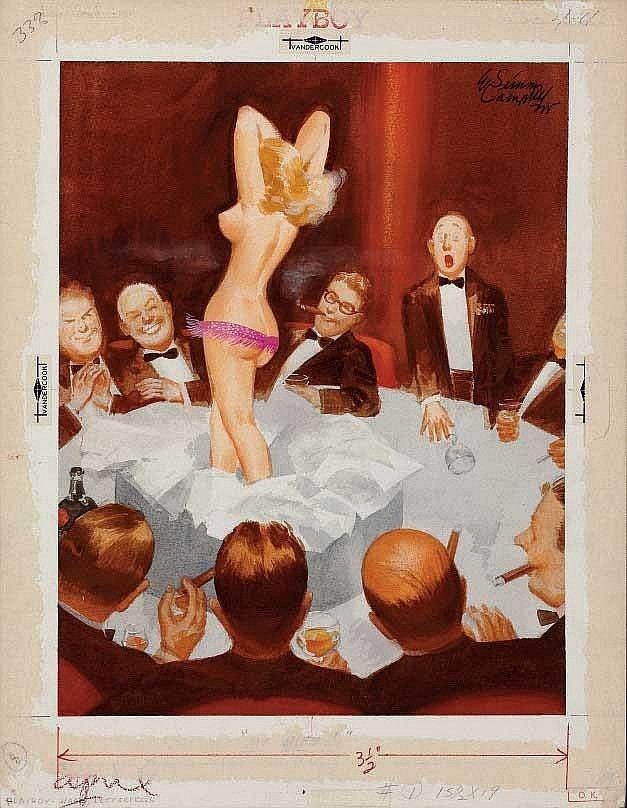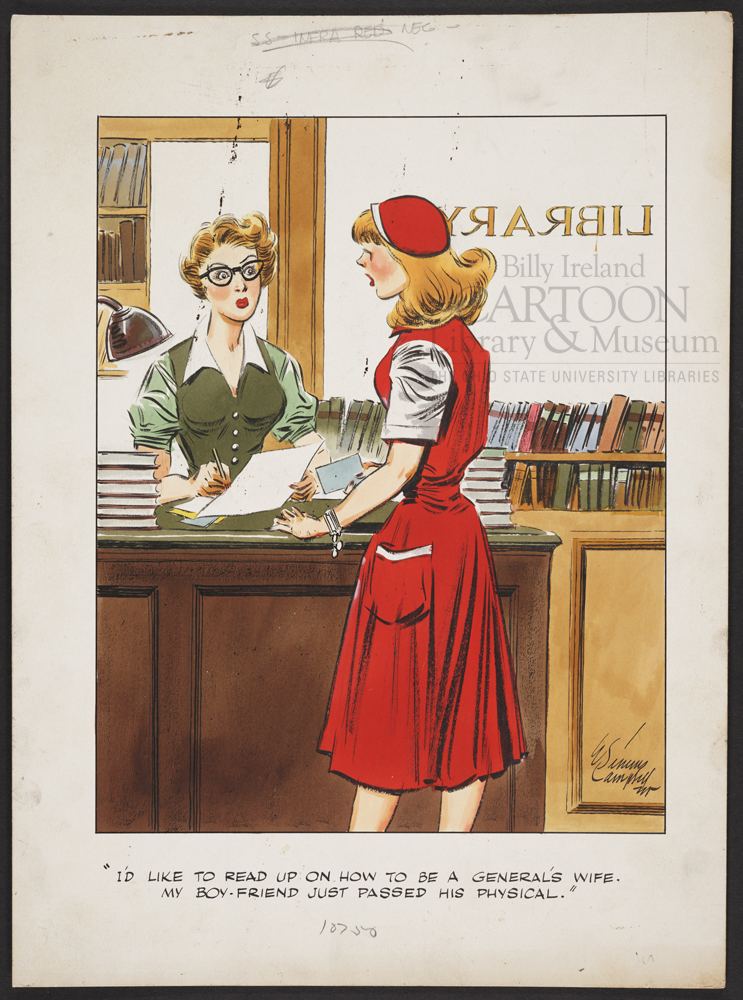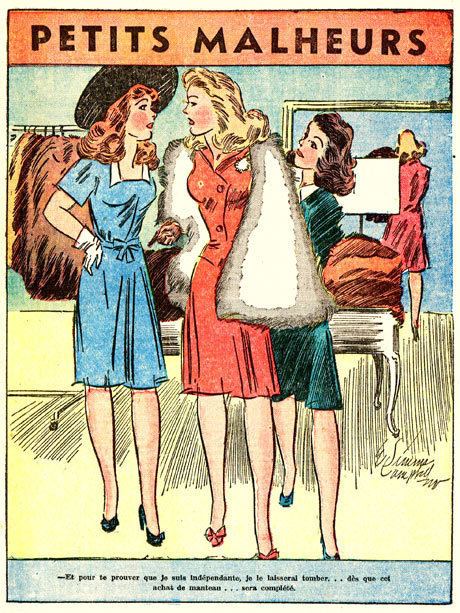Nationality American | Notable works Cuties Name E. Campbell | |
 | ||
Education University of Chicago, School of the Art Institute of Chicago | ||
Elmer Simms Campbell (January 2, 1906 – January 27, 1971) was an American cartoonist who signed his work E. Simms Campbell. He was the first African-American cartoonist published in nationally distributed slick magazines, and he was the creator of Esky, the familiar pop-eyed mascot of Esquire.
Contents

Humor magazines

Born in St. Louis, Missouri, the son of educators Elmer and Elizabeth Simms Campbell. His father, who died when Campbell was four years old, was assistant principal of Summer High School in St. Louis, and had been a track and football star at Howard University. With his mother he moved to Chicago, Illinois, where she attended the University of Chicago. Campbell graduated from that city's Englewood High School, where he was cartoonist for his high school's weekly newspaper, edited by future International News Service general manager Seymour Berkson. Leaving the University of Chicago after one year, Campbell graduated from the Chicago Art Institute.

During a job as a railroad dining-car waiter, Campbell sometimes drew caricatures of the train riders, and one of those train passengers, impressed by Campbell's talent, gave him a job in a St. Louis art studio. He spent two years at Triad Studios before moving to New York City in 1929. After a month, he found work with the small advertising firm Munig Studios, and began taking classes at the Academy of Design. He contributed to various humor magazines, notably Life, Judge and College Humor.

Following the suggestion of cartoonist Russell Patterson to focus on good girl art, Campbell created his "Harem Girls," a series of watercolor cartoons which attracted attention in the first issue of Esquire. Campbell's artwork was in almost every issue of Esquire from 1933 to 1958, and he also contributed to The Chicagoan, Cosmopolitan, Ebony, The New Yorker, Playboy, Opportunity, Pictorial Review and Redbook. His work in advertising included illustrations for Barbasol, Springmaid and Hart Schaffner & Marx.

Campbell also wrote a chapter on blues music in the 1939 book Jazzmen, a seminal study of jazz's history and development.

Campbell died in White Plains, New York, in 1971.
Books

His gag panel, Cuties, syndicated by King Features in more than 145 newspapers, was later collected in a paperback published by Avon.
"A Night-Club Map of 1930s Harlem"

Of enduring cultural and historical interest is the witty, cartoon-filled map Campbell drew in 1932 – "A Night-Club Map of 1930s Harlem" – identifying the attractions of Harlem during the Harlem Renaissance, and adding his personal notes. He captures the intensity of the scene: within a few blocks of each other he has cartooned Cab Calloway singing at the Cotton Club, Bill "Bojangles" Robinson doing his step dance at the Lafayette Theater – "Friday night is the Midnight show, Most Negro revues begin and end here." Lissome "cafe au lait girls" dance at Small's Paradise. Outside, doormen welcome White swells in top hats, while an elegant Black couple in evening dress dance "the Bump." The map appears in the book version of Ken Burns's documentary Jazz. Jazz historian Mike Thibault reports that the original was shown by the Smithsonian in 1996.
